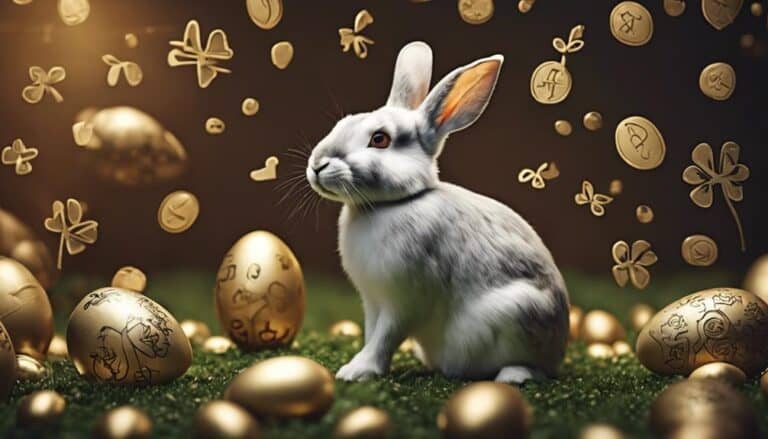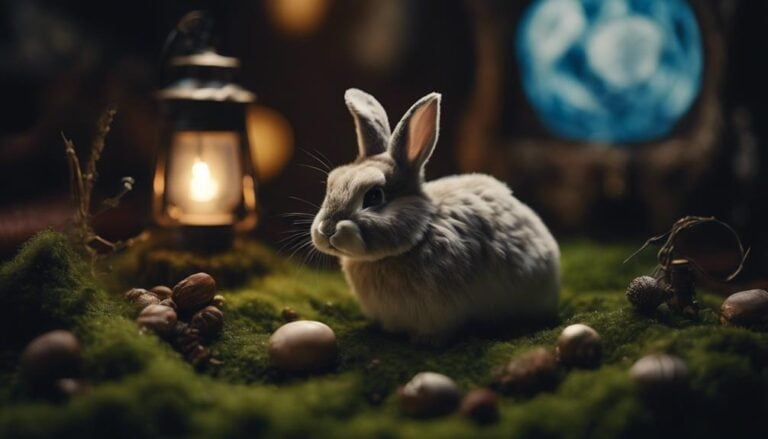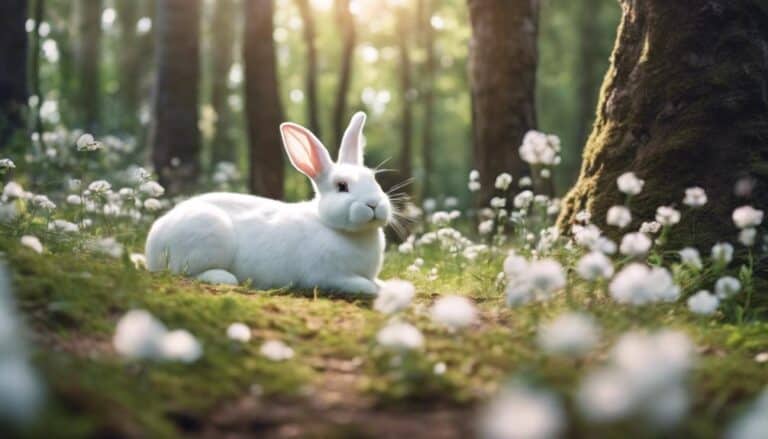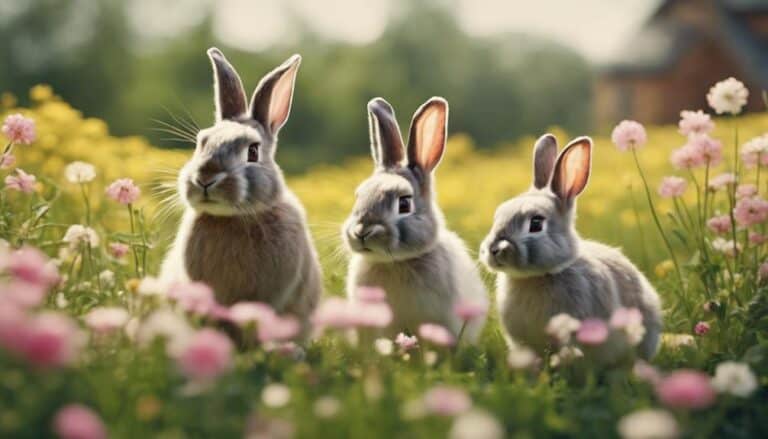Have you ever pondered the curious connection between bunnies and the intricate tapestry of literature?
The presence of these furry creatures transcends mere aesthetics, weaving through narratives with symbolic depth and nuanced meanings.
From ancient folklore to modern tales, bunnies hop through pages, carrying with them a myriad of interpretations and roles.
But what exactly lies beneath their fluffy exteriors, and how do these creatures shape the literary landscape?
Contents
Key Takeaways
- Bunnies symbolize fertility, rebirth, and intelligence in literature.
- They represent innocence, vulnerability, and constant evolution.
- Bunny motifs evoke themes of growth, renewal, and resilience.
- From historical symbolism to modern interpretations, bunnies enrich literature with their versatile and enduring significance.
Historical Bunny Symbolism in Literature
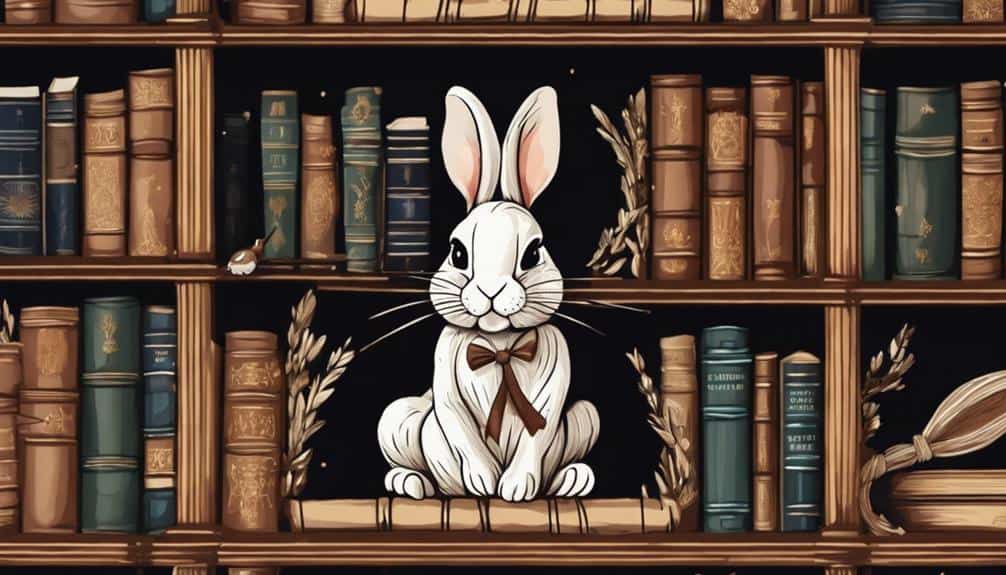
Examining the historical significance of bunny symbolism in literature reveals a rich tapestry of meanings intertwined with themes of fertility, rebirth, and intelligence. Rabbit symbolism often embodies the essence of fertility and abundance, linking these creatures to the cycle of life and the natural world's bounty. Bunnies symbolize rebirth, emphasizing their role in representing new beginnings and the endless possibilities of creation. The trickster archetype associated with rabbits highlights their intelligence, resilience, and connection to the spirit world, portraying them as cunning and resourceful beings capable of overcoming challenges.
In literature, bunnies are frequently depicted as keen observers, showcasing their intelligence and adaptability in various narratives. Their resilience in the face of adversity mirrors themes of survival and strength. The association of bunnies with femininity underscores their nurturing qualities and creative essence, adding layers of depth to their symbolic representation. Overall, the historical depiction of bunny symbolism in literature underscores their multifaceted nature, embodying a blend of fertility, rebirth, intelligence, resilience, observation, femininity, and survival.
Cultural Representations of Bunnies
The rich historical tapestry of bunny symbolism in literature seamlessly extends into various cultural representations, showcasing the enduring significance of these creatures across diverse folklore traditions.
- Peter Rabbit by Beatrix Potter: Beatrix Potter's beloved character, Peter Rabbit, exemplifies the innocence and mischievousness often associated with bunnies in British children's literature. Through Peter's adventures, Potter explores themes of curiosity and the consequences of disobedience, inviting readers to reflect on the complexities of morality and human-animal relationships.
- Alice's Adventures in Wonderland by Lewis Carroll: The iconic White Rabbit in Lewis Carroll's 'Alice's Adventures in Wonderland' represents a blend of whimsy and urgency, guiding Alice into a fantastical domain. This portrayal of the White Rabbit highlights the role of bunnies as symbols of curiosity and the gateway to new experiences, challenging readers to explore the boundaries between reality and imagination.
- Brer Rabbit in Folklore: Brer Rabbit, a prominent figure in African American folklore, embodies cleverness and resourcefulness. Through Brer Rabbit's escapades, folklore traditions weave together themes of survival, wit, and the intricate dynamics of human-animal relationships, offering insights into resilience and adaptability in challenging circumstances.
Bunnies as Allegorical Characters
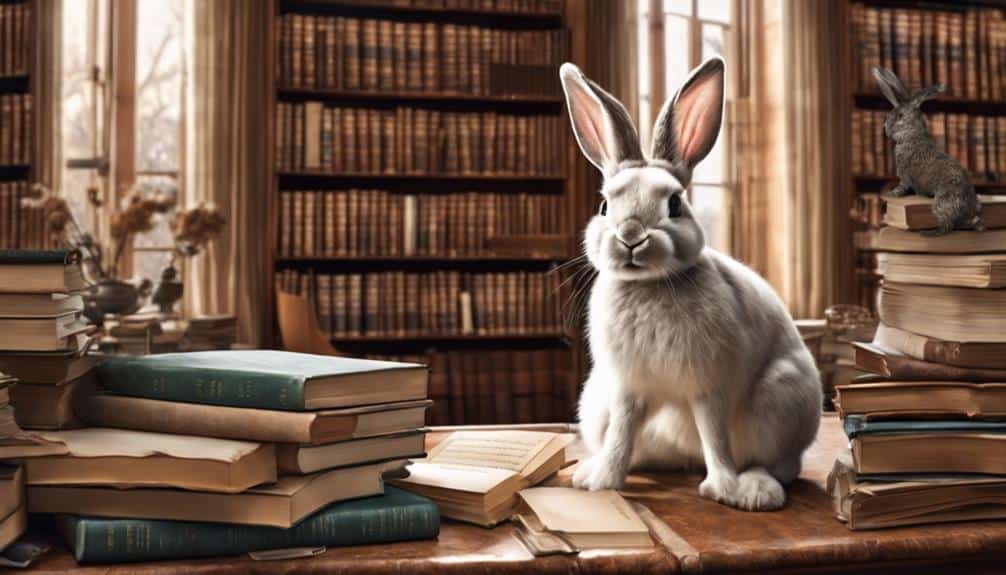
Within literary works, bunnies as allegorical characters intricately symbolize innocence, vulnerability, and purity, weaving a tapestry of thematic depth and emotional resonance for readers to explore. These allegorical figures often represent more than their literal presence, delving into profound themes such as growth, transformation, and rebirth.
The innocence of bunnies mirrors the purity and naivety associated with childhood, inviting readers to reflect on the loss of innocence or the preservation of purity in a harsh world. Vulnerability embodied by bunnies serves as a poignant reminder of the fragility of life and the need for protection in the face of adversity. Additionally, the curiosity and playfulness commonly attributed to bunnies symbolize the joy of exploration and the embrace of life's wonders.
Through these allegorical characters, authors craft narratives that resonate with readers on a deeply emotional level, offering insights into the human experience and the complexities of existence.
Bunny Motifs in Poetry
In exploring the thematic nuances of poetry, the incorporation of bunny motifs intricately weaves together symbols of innocence, vulnerability, and purity, offering readers a lens through which to contemplate themes of youth and simplicity. Bunny motifs in poetry serve as powerful symbols that evoke a range of emotions and ideas, enriching the poetic experience. Here are three key aspects to ponder:
- Symbolism of Innocence: Bunnies in poetry often symbolize innocence, their gentle and delicate nature reflecting purity and naivety, inviting readers to reflect on the simplicity and untainted beauty of youth.
- Representation of Growth: Bunny motifs can also represent growth and renewal, mirroring the cyclical nature of life. Through bunnies, poets convey themes of rebirth and transformation, reminding readers of the constant evolution and change in life.
- Evocation of Playfulness: Bunnies bring a sense of playfulness and curiosity to poetry, engaging readers in a whimsical exploration of the text. Their presence adds a light-hearted charm, encouraging readers to approach the verses with a sense of wonder and joy.
Contemporary Bunny Literary Trends
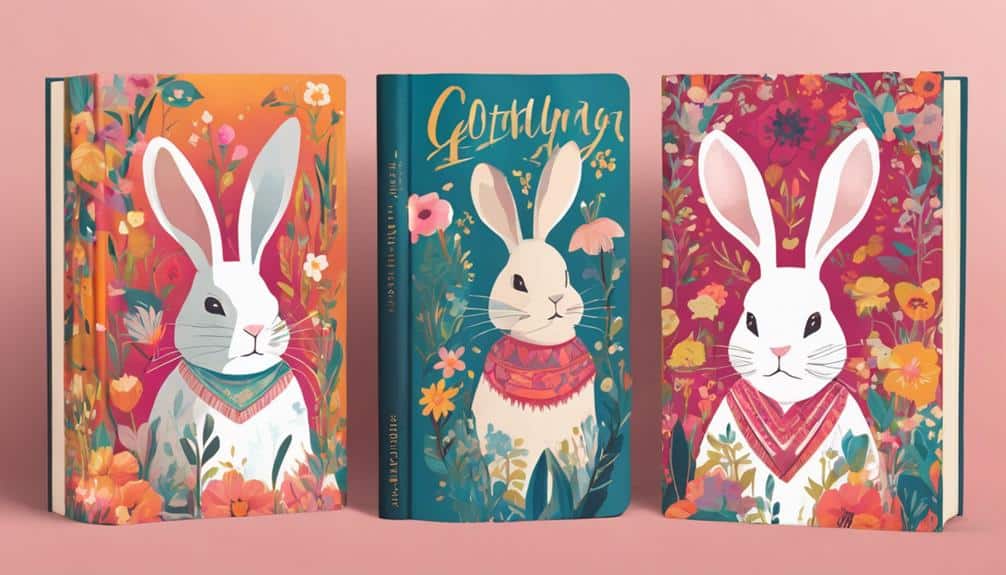
Exploring contemporary literary trends reveals how bunnies have evolved as potent symbols, embodying themes of resilience, survival, and feminine power in modern works.
In the tradition of Beatrix Potter's beloved character Peter Rabbit, rabbit characters in literature today symbolize much more than mere cuddly creatures. They're depicted as complex symbols reflecting intelligence, creativity, and rebirth.
Authors like Tess Gunty utilize rabbit symbolism to convey themes of rebirth, resilience, and growth in their narratives. The Rabbit Hutch, a significant location in many novels, symbolizes feminine creativity, survival, and keen observation.
Rabbit motifs in literature explore concepts of observation, regrowth, and turning the tide for better outcomes. This trend showcases how bunnies in contemporary literary works serve as powerful metaphors for human experiences, resonating with readers seeking narratives that delve deep into themes of resilience, survival, and feminine power.
Frequently Asked Questions
What Does a Rabbit Symbolize in Literature?
In literature, a rabbit symbolizes innocence and purity, fertility and abundance, luck and fortune, trickery and deceit, rebirth and renewal, speed and agility, vulnerability and fragility, curiosity and exploration, companionship and friendship, as well as escape and freedom.
What Is the Symbolism of a Bunny?
In literature, bunnies symbolize innocence, vulnerability, fertility, abundance, cunning, fear, resilience, luck, curiosity, freedom, transformation, and love. They embody a complex interplay of emotions and themes that resonate with readers.
What Role Does a Rabbit Play?
In stories, a rabbit serves as a versatile character, enhancing narratives as a storytelling device. It embodies innocence, often portrayed as a companion character with mischievous behavior. Symbolizing fertility and luck, this magical creature captivates with its endearing qualities.
What Is Significant About Rabbits?
In folklore, bunnies hold significance through fertility symbolism, innocence portrayal, and trickster archetype. They connect to nature, possess resilience traits, and exhibit burrowing behavior. Their cuteness and magical aura are entwined with Easter traditions.
Conclusion
To summarize, bunnies in literature serve as versatile symbols that embody various traits and themes, from femininity and creativity to resilience and rebirth. Their presence enriches narratives with layers of meaning and emotion, resonating with readers on multiple levels.
As the adage goes, 'Don't judge a book by its cover,' bunnies in literature remind us to look beyond the surface and explore the deeper significance of their representation, providing insight into the human experience.

